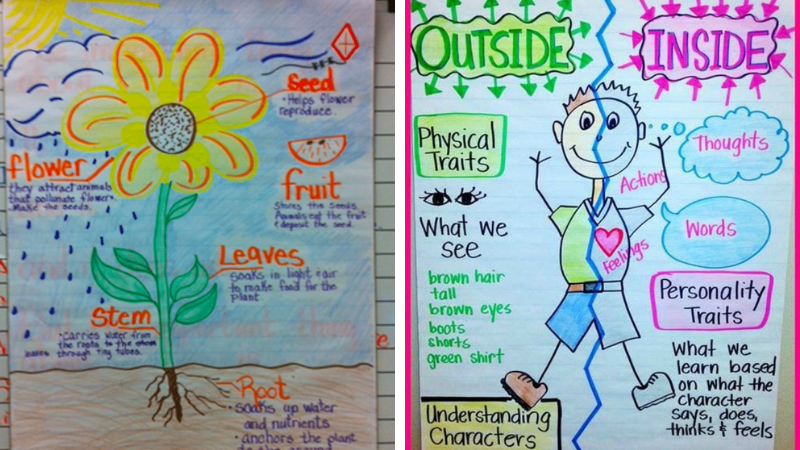Introduction
As the landscape of education continues to evolve, the integration of technology in the classroom has become an essential aspect of effective teaching. Among the numerous edtech tools available to educators, Class Charts stands out as a versatile and powerful platform designed to revolutionize classroom management and student engagement. In this comprehensive review, we will explore the features, benefits, and potential drawbacks of Class Charts, aiming to provide teachers with a detailed understanding of how this tool can positively impact their teaching practices.
Overview of Class Charts
Class Charts is an online platform that facilitates efficient classroom management by streamlining various administrative tasks, such as seating arrangements, behavior tracking, and progress monitoring. Developed by the UK-based company Edukey Education Ltd, Class Charts is rapidly gaining popularity worldwide due to its user-friendly interface and comprehensive functionalities.
1.1 User Interface and Accessibility
Class Charts boasts an intuitive user interface that ensures ease of navigation for teachers of all technical backgrounds. Accessible via web browsers or mobile applications, teachers can easily view and manage their classes, attendance, and behavior records, making it a convenient tool to use on any device.
1.2 Integration and Synchronization
Class Charts seamlessly integrates with popular learning management systems (LMS) and student information systems (SIS), such as Google Classroom and Microsoft Teams. This integration allows teachers to synchronize student data effortlessly, reducing redundancy and saving valuable time.
Features and Functionality
2.1 Seating Arrangements
One of the standout features of Class Charts is its advanced seating arrangement tool. Teachers can create seating plans by simply dragging and dropping students into their desired seats. The platform also considers various factors, including student behavior and learning preferences, to optimize seating arrangements for a harmonious classroom environment.
2.2 Behavior Tracking
Class Charts offers a comprehensive behavior tracking system that enables teachers to record and monitor students’ conduct in real-time. This feature helps educators identify patterns of behavior, address potential issues promptly, and provide targeted support to students who may require additional assistance.
2.3 Reward Systems
To foster positive behavior and motivation, Class Charts includes a reward system where teachers can award points or merits to students for exemplary conduct, academic achievements, or other desired behaviors. Students can redeem these points for rewards, creating a gamified and engaging learning experience.
2.4 Data Analytics and Reports
Class Charts provide teachers with valuable insights into student performance and behavior through data analytics and detailed reports. Educators can track attendance trends, behavior patterns, and academic progress, enabling them to make data-driven decisions to enhance teaching strategies and support individual student needs.
Benefits of Class Charts
3.1 Enhanced Classroom Management
Class Charts significantly simplify classroom organization and management, enabling teachers to focus more on instructional delivery and student engagement. The seating arrangement tool alone can lead to a more productive learning environment, as students are strategically placed to minimize distractions and maximize their learning potential.
3.2 Improved Student Behavior
The behavior tracking and reward systems encourage positive conduct, fostering a culture of mutual respect and responsibility within the classroom. By providing immediate feedback and recognition for good behavior, Class Charts reinforce positive habits and motivate students to continue exhibiting desired behaviors.
3.3 Personalized Learning
With the ability to access student data and analytics, teachers can identify students’ strengths, weaknesses, and learning preferences. This valuable information allows educators to tailor their instruction to meet individual student needs, promoting personalized learning experiences that lead to better academic outcomes.
3.4 Parent Engagement
Class Charts facilitate communication between teachers and parents, enabling them to stay informed about their child’s academic progress and behavior in real-time. This enhanced parent-teacher collaboration strengthens the home-school connection, ultimately supporting students’ overall development.
Potential Drawbacks
4.1 Learning Curve
While Class Charts boasts an intuitive interface, some teachers with limited technological experience may initially find it challenging to fully utilize all features. Proper training and support are essential to ensure educators can harness the platform’s full potential effectively.
4.2 Time Investment
Implementing Class Charts effectively requires a commitment of time and effort from teachers, particularly during the initial setup and data input stages. However, the long-term benefits of streamlined classroom management and improved student outcomes outweigh this initial investment.
Conclusion
Class Charts presents itself as a powerful ally for educators seeking to elevate their classroom management strategies and enhance student engagement. With its user-friendly interface, comprehensive features, and data-driven insights, this edtech platform empowers teachers to create a positive and conducive learning environment for all students. By embracing Class Charts, teachers can streamline administrative tasks, gain valuable insights into student behavior and academic progress, and, ultimately, drive improved learning outcomes.
As with any educational tool, successful implementation requires proper training and ongoing support to ensure educators make the most of its capabilities. Class Charts, when utilized to its fullest potential, can transform the teaching experience, making it a valuable asset in the modern classroom.








